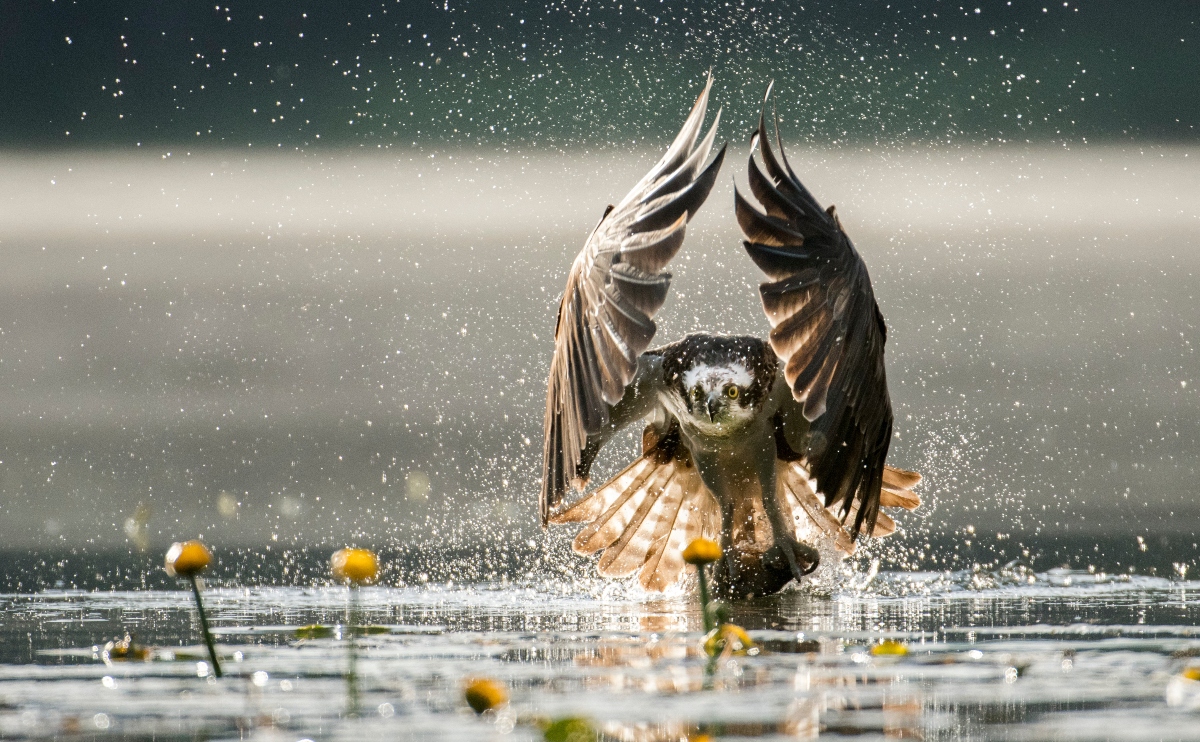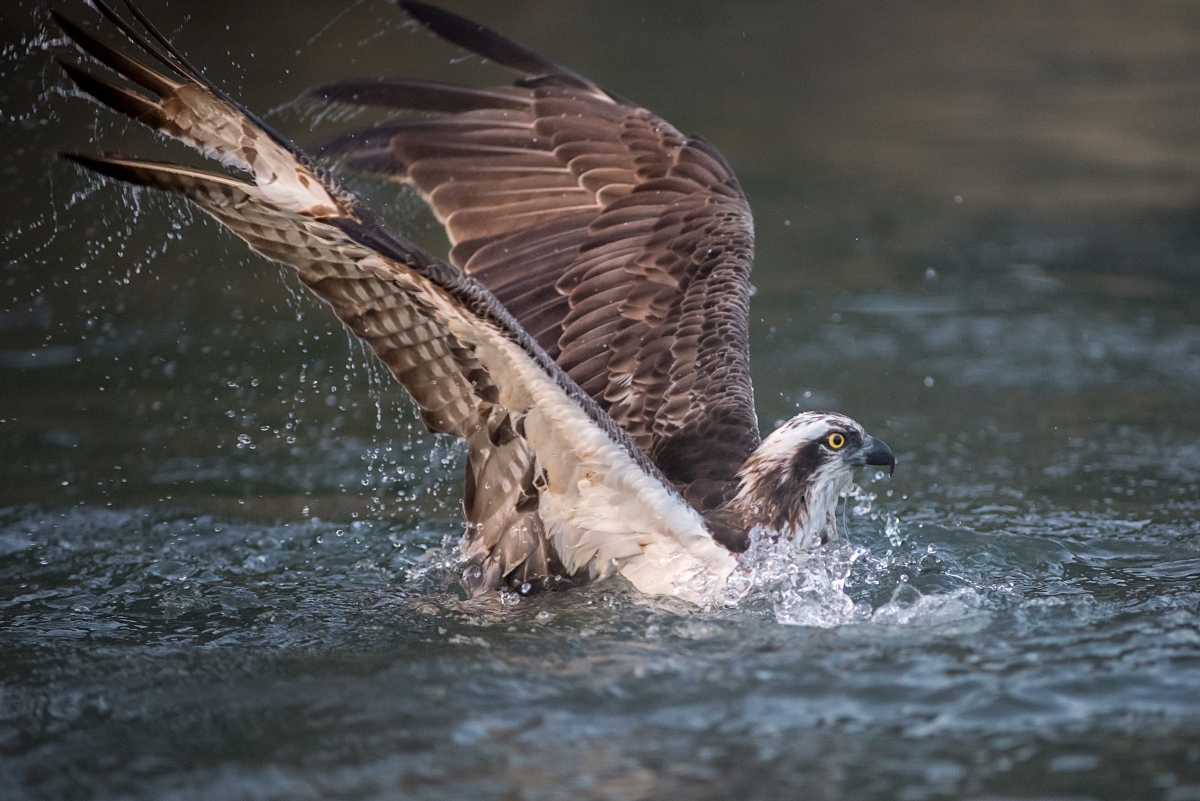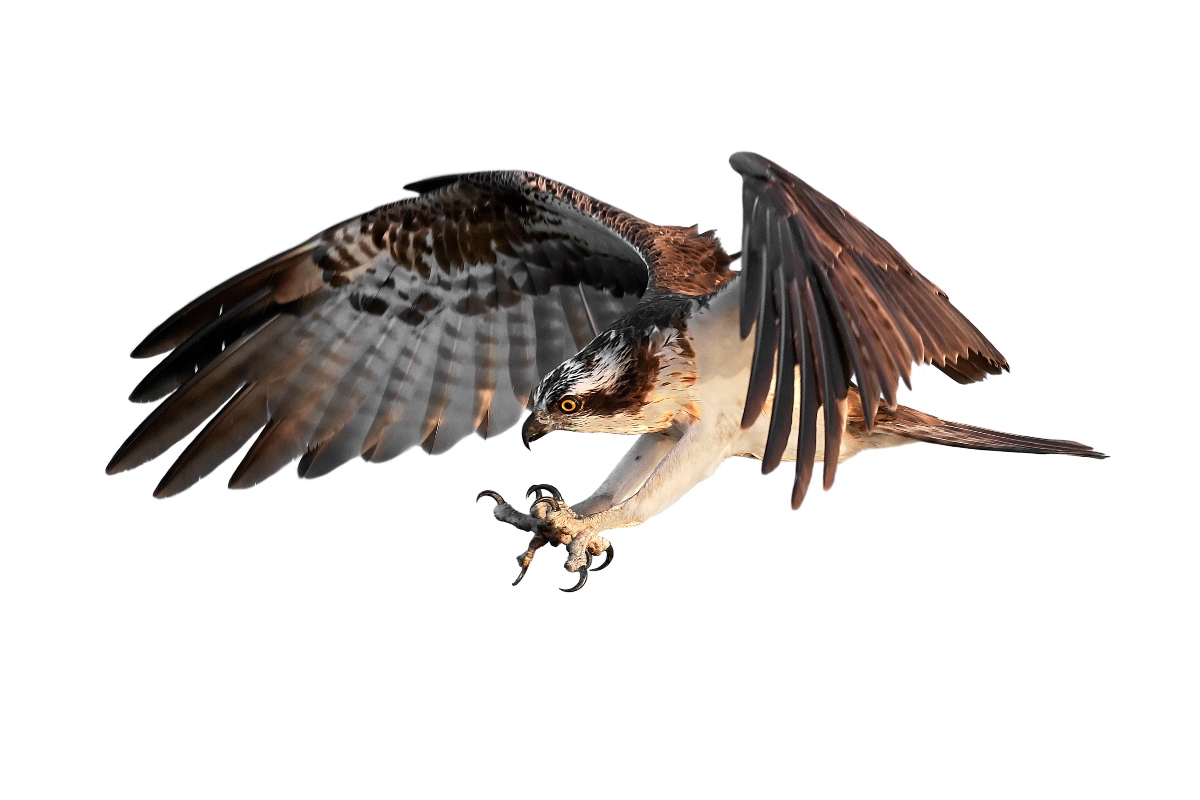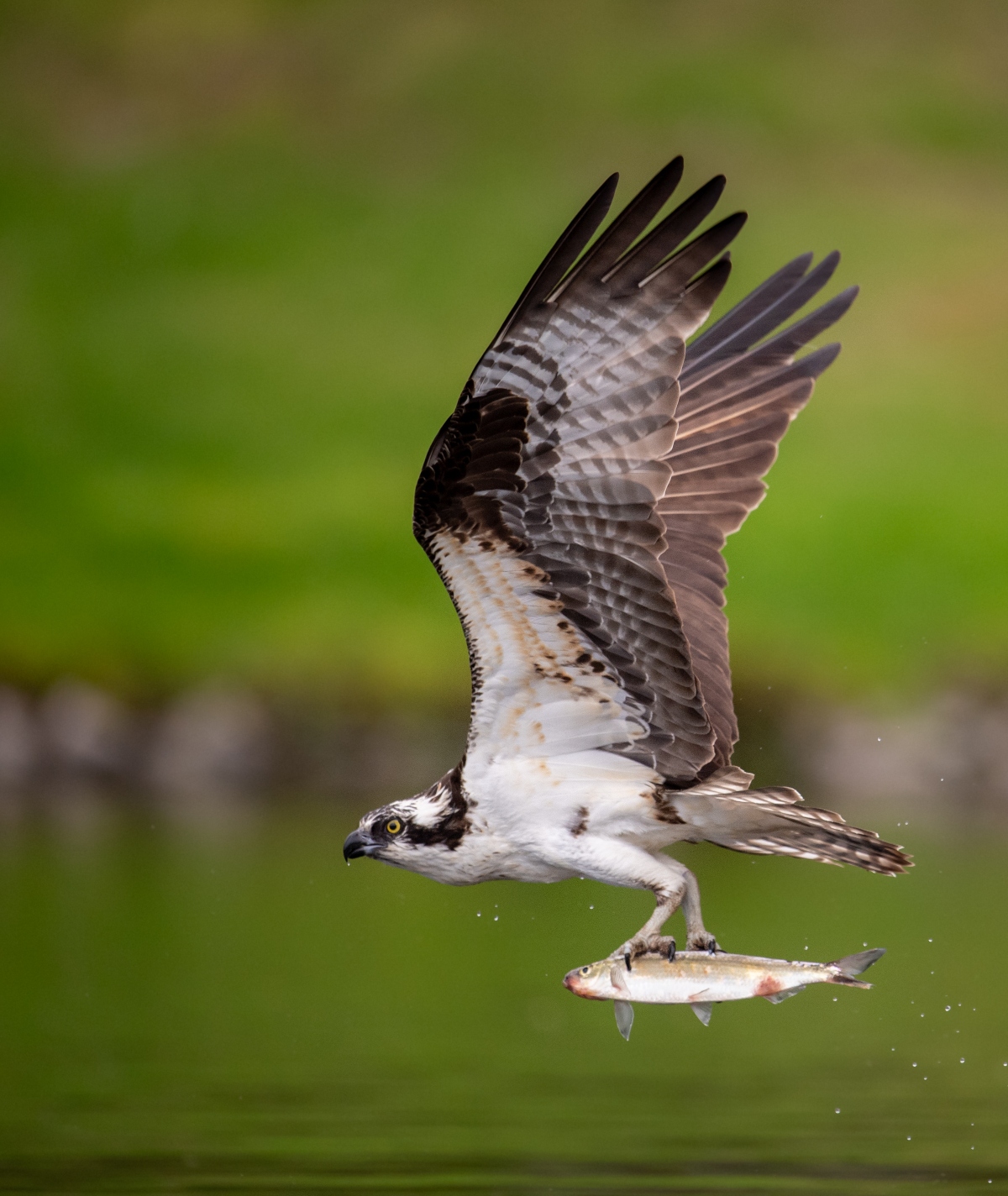Soaring above shimmering lakes and coastal waters, a raptor with distinctive black and white markings and a purposeful gaze descends with talons outstretched, ready for the catch. This is the Osprey, often referred to as the sea Hawk, a bird that exemplifies precision, power, and an unparalleled affinity for aquatic environments.

The Osprey, scientifically termed Pandion haliaetus, stands out not only due to its striking appearance but also its near-global distribution. From the temperate zones of North America and Europe to the tropical coasts of Australia and South America, wherever there’s water with fish, you’re likely to find this magnificent raptor.
With a wingspan that can exceed six feet, the Osprey is perfectly adapted for its piscivorous lifestyle. Its reversible outer toes allow it to grasp slippery fish with a secure two-toed front and two-toed back grip. This unique feature, combined with its keen eyesight and the ability to dive feet-first, makes it one of nature’s most efficient fishers.

Upon spotting a fish, the Osprey takes a calculated aerial plunge, snatching its prey with its sharp talons. This spectacular dive, with the bird almost fully submerged, is a sight to behold and a testament to the bird’s hunting mastery.
Another fascinating trait is its nest-building behavior. Ospreys often select high points like dead tree tops, cliffs, or even human-made structures to build their substantial nests. These nests, made of sticks and lined with softer materials, often serve as platforms for the raptors to oversee their watery domains.

While Ospreys predominantly focus on fish, their relationship with the environment is a delicate one. Changes in water quality, overfishing, and habitat disturbances can impact their feeding grounds. Historically, pesticide use, particularly DDT, led to significant declines in some Osprey populations. Thankfully, with conservation measures, bans on harmful chemicals, and dedicated efforts to erect nesting platforms, their numbers have rebounded in many regions.
Culturally, the Osprey is revered in many indigenous traditions as a symbol of vision, tenacity, and freedom. Its ability to move between the realms of water and air makes it a bridge between different worlds and perspectives.

For those fortunate enough to witness an Osprey in action, the experience is transformative. It speaks of the majesty of nature, the intricate dance of predator and prey, and the interconnectedness of life. As champions of their aquatic realms and the skies above, Ospreys serve as a beacon of the wild, unyielding spirit that nature embodies.